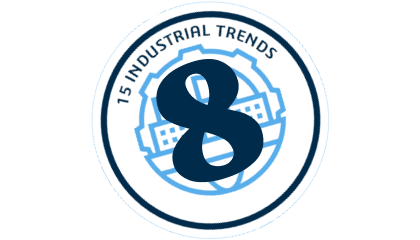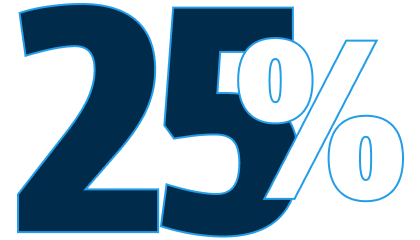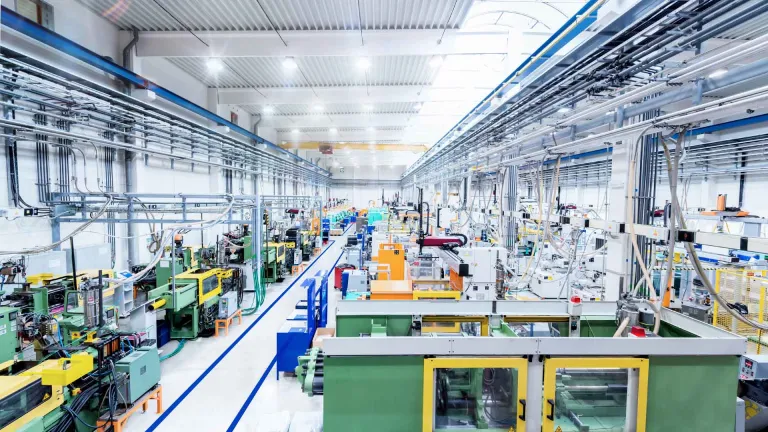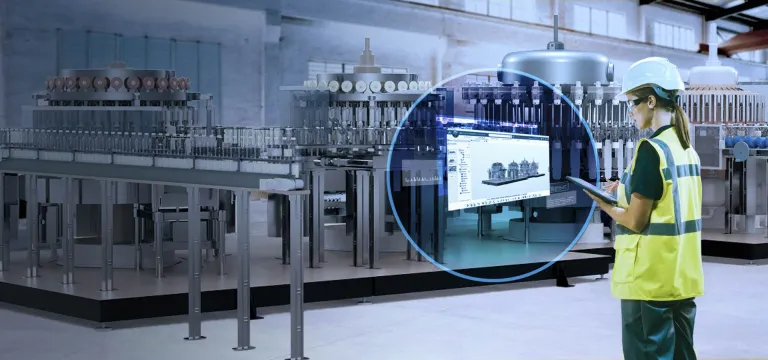Everything As A Service
Increasingly, businesses aren’t selling you products; they are selling you services on those products. But are manufacturing industries ready for this radical change in business model?

Is your business ready for a world of always-on service?
What’s happening?
In the old world, commerce worked like this: You bought an item, owned the item, then discarded the item when it reached the end of life. But increasingly, this model is falling out of favor.
Instead, the Fourth Industrial Revolution, and the associated rise of IoT, data, and connectivity is driving the rise of a new approach to the sale and management of goods and manufacturing services: Servitization. Increasingly, people are not necessarily buying a single product, but a lifetime relationship with the supplier of that product.
Say you buy a car, or a piece of capital equipment. Under old models, you would own the asset, and periodically call in for repairs or new parts. Servitization transforms that business model into one of personalized goods that are continuously monitored and serviced. This allows manufacturers to better address customer demand, and generates a continuous revenue stream for vendors.

It’s no minor thing. By 2023, research from Grupo Milan suggests that 20% of industrial equipment manufacturers will be EaaS (Equipment-as-a-Service, or Everything-as-a-Service), with remote industrial IoT capabilities up from a base of near zero.
For customers, the benefits of EaaS are substantial, allowing them to enjoy higher-functioning equipment at a lower upfront cost (think a Netflix-style, subscription-based model). The business case for the industrial service economy is robust too: Research from McKinsey has found that average margins on aftermarket service are about 25%, compared to just 10% for new product sales.

“After sales revenue – that is the installation of the piece of equipment and the servicing of that piece of equipment for the following 20 to 30 years – is where money is increasingly being made, not with the new equipment itself,” says Philippe Bartissol, Vice President, Industrial Equipment, Dassault Systèmes.
“Formerly, manufacturers would buy a machine and that would be the end of it,” says Sophie Proust, Industry Market Analyst Director, Dassault Systèmes. “With servitized machines, an EaaS supplier can continually monitor those machines, improving lifetime performance. The customer gets a better service, and the machine operator gets a new business model.”
Curious about how other manufacturing industries respond?
Respond to today's challenges with our bespoke solutions
Why does it matter?
The rise of industrial equipment service has implications across industries from industrial engineers to consumers. Philippe Loeb, Consumer Packaged Goods & Retail and Home & Lifestyle Industry Vice President, Dassault Systèmes, elaborates: “Consider the footwear industry. When we buy shoes, we hope they fit, but even the best shoes can break or lose their support. So, you buy another pair of shoes, and then another. It’s wasteful, and a poor experience for you as a consumer. Servitization looks to change that.”
However, this seismic shift in business models means operations will need to adapt accordingly, and manufacturers will have to be aware of the myriad pressures this will bring and know how to manage them.
Loeb gives the example of logistics: “With servitization, shipping needs to be much more precise, for instance. If and when companies really decide to commit to a servitization model, they will need to understand properly what the implications of this shift will be for their operations.”
It can also change how you sell. Tom Acland, CEO at 3DEXCITE, Dassault Systèmes highlights the changing nature of the sales operation in the world of capital equipment purchasing. “EaaS means a change from high-touch sales patterns, where you had on-site visits from specialized buying teams to low-touch, more automated processes. This means you need new ways to sell.”
Maintenance, too, gets an upgrade. With virtual twins, which can provide a constantly updated body of information on the status of machines in service, operators can achieve a highly nuanced view of their equipment, and even engage in measures like predictive maintenance.
This all leaves several pressing questions for manufacturing industries looking to move to a more servitized business model. What industrial equipment solutions can I offer? How do I manage this change? How do I prepare my facilities? And how do I establish a network of communication that allows me to stay on top of customer demand?
Manufacturing Industries on the Edge: Transformation from the inside out
Having established what manufacturers can do embrace innovation, we now look at what they can do with technology once they have it, and how it can be used to address risk and pursue new kinds of value.
How can I prepare?
Tying together EaaS value networks is data. For items to be manufactured to order and then continually updated, customer data needs to be easily accessible. This is the bedrock upon which servitized businesses must be built.
However, building a data-centric model means addressing concerns around data integrity. Whether it’s inputting your health metrics with a customized food provider, or sharing operational blueprints with a capital equipment manufacturer, customers have every right to expect privacy and security.
“EaaS means a lot more data being shared,” says Loeb. “And we have to think carefully about how we protect that personal data, how we help people share only what they want to share, and how we inform them about how that data will be used.”
The focus of the next few years will therefore be on digital tools that help manage all this data in a way that is secure yet collaborative. Integrating the necessary data on a shared single platform gives both customers and suppliers a single source of truth from which to work, as well as the ability to create walled gardens – ring-fencing specific pools of data so only the necessary information gets shared. It is crucial that what needs to stay private, stays private.
“The implications on the business models of companies are going to be huge,” says Loeb. “It goes without saying, becoming a servitized business is a dramatic change. But if you do it right, it can offer a truly radical improvement in your levels of service, and in your revenue model.”
Becoming a servitized business is a dramatic change. But if you do it right, it can offer a truly radical improvement in your levels of service, and in your revenue model.
Other Trends
Discover more with our Manufacturing Industries
- Aerospace & Defense
- Consumer Packaged Goods & Retail
- Home & Lifestyle
- High-Tech
- Industrial Equipment
- Marine & Offshore
- Transportation & Mobility
Bridge the gap between the virtual and real world to accelerate from concept to operations.
We are in an unprecedented period of defense modernization fueled by increased defense budgets and technology breakthroughs like hypersonics and autonomous systems.
Discover how the 3DEXPERIENCE® platform drives innovation in the industry with CPG solutions for design, simulation and AI-driven forecasting.
Virtual Twin Experiences for Sustainable Innovation – Helping Manufacturers Improve Consumer Products
Simplify and accelerate innovation to create more valuable consumer experiences.
Digitalize manufacturing to deliver made-to-order innovation.
Virtual twins and advanced analytics drive performance optimization, operational efficiency, and superior customer service.
Leverage the 3DEXPERIENCE platform for greater field operations efficiency, after-sales services and success in the industrial equipment scene.
Accelerate the sustainable transformation of the Marine & Offshore industry.
Driving vehicle innovation toward the mobility of the future
THE WORLD NEEDS MANUFACTURERS
A MANIFESTO FOR CHANGE













